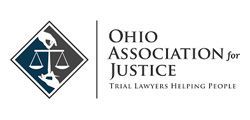FAQs
Marshall Grinder Debski Pitts
Have a question related to veterans benefits? We have the answer. Check out these FAQs and give us a call today for more information!
Who are veterans?
According to Veterans Affairs (VA), a vet is “a person who served in the active military, naval, or air services, and who was discharged or released under conditions other than dishonorable.” The VA reserves the right to determine whether a veteran’s discharge and disability were honorable, or the result of total dishonorable service, or from an isolated dishonorable act. Therefore, the VA may decide that a veteran does not qualify for benefits, regardless of the length of service or what type of discharge he or she may have.
In the United States, there are approximately 24,000,000 veterans. Less than one million of these vets served in World War II and the Korean War. An estimated 3.4 million served in the Vietnam War. As of January 2007, more than 1.6 million soldiers had served in Afghanistan and Iraq. Only 11% of these veterans currently receive benefits.
What are veterans benefits?
Veterans benefits are paid in two forms: compensation and/or pension.
What is compensation?
Compensation is paid to a veteran due to a disability (or disabilities) if the injury or disease has occurred as a direct result of military service. The amount of compensation is not determined by need or time served but is determined by the extent of the disability, based on 10% increments of severity. This form of determination for compensation has long been considered unfair, and this method of benefit is gradually being eliminated.
If a veteran qualifies for compensation, he or she will receive a monthly check based on his or her percentage of disability, ranging from 10% ($112 a month) to 100% ($2393 a month). For veterans with very severe disabilities, the amount of compensation can exceed 100%.
Who qualifies for compensation?
To be eligible for compensation, a veteran must prove that he or she was discharged honorably, that there is medical evidence of current disability, that the disability occurred as a result of (or was aggravated by) military service, and a veteran must provide medical evidence that links the current disease or injury with a disease or injury obtained while serving.
What is a pension?
Military pension benefits do not refer to retirement benefits. Pension benefits are, in fact, more similar to Supplemental Security Income (SSI). They are needs-based benefits issued to veterans who have at least 90 days of wartime service (including stateside service during a time of war) and who are totally disabled. The injury or disease causing the disability does not have to be a result of service.
A pension is paid in a flat amount that offsets any other income that the veteran is currently receiving (such as SSI). Disabled veterans whose income is below the poverty line will usually qualify for pension benefits.
Veterans’ Benefits do not offer pensions but do offer service connected benefits.
Can the surviving spouse of a veteran receive benefits?
Yes. A surviving spouse may be eligible for Dependency and Indemnity Compensation (DIC) if the death of the veteran was a result of his service. The spouse may also qualify upon the death of the veteran if the veteran had suffered a total disability for a certain length of time.
A spouse must apply for DIC benefits. They are not automatic. As of December 1, 2005, DIC Benefits are $1,033 per month.
How does the claims process work?
First, a claim is filed at the state Regional Office (RO). Most claims are judged and concluded at this level. If a veteran is unhappy with the decision made at the RO level, he or she may request that the RO review the decision.
If a vet wants to try to appeal the claim, the next step goes to the Board of Veterans Appeals (BVA). Currently, it is taking two to two-and-a-half years for the BVA to decide an appeal.
If appeals need to continue past the BVA level, they may be heard at the next highest court: the Court of Appeals for Veterans Claims (CAVC). The final stage of an appeal may occur at the Court of Appeals for the Federal Circuit. Only one veteran’s case has ever been accepted at the Supreme Court.
Can I hire an attorney to help me get my veterans benefits?
Yes! As of 2007, attorneys are able to assist clients with the claims process. In the past, the legislature has strongly restricted a lawyer’s ability to represent veterans. Since the Civil War, federal courts have upheld preemption statutes that severely limit the amount of compensation that an attorney may charge for his or her services for cases regarding Veterans Benefits. These limits made it frustratingly impossible for an attorney to represent these injured victims.
Until recently, veterans were represented exclusively by Veterans Service Organizations (VSO’s) such as the VFW, the American Legion, or AMVETS. These organizations offer representatives who often provide great services at the beginning of the benefit filing process. However, these representatives are not attorneys and they have been criticized for failing to spot issues or for not continuing appeals.
Now that law has been amended, veterans have the right to seek legal representation. Dedicated attorneys who become members of the National Organization of Veterans Advocates (NOVA), such as those lawyers at the Marshall Grinder Debski Pitts Law Firm, are able to pursue a veteran’s claim for benefits with maximum effort to obtain the best possible results.
What is NOVA?
The National Organization of Veterans Advocates (NOVA) was founded in 1994 and is exclusively composed of representatives of veterans. The organization identifies attorneys or representatives who are trained and qualified in VA law. Members are permitted to practice at the Court of Appeals for Veterans Claims (CAVC). Many members represent vets through all stages of the claims process. Learn more about NOVA by visiting their website.
How can attorneys be recognized as a veteran's representative?
To establish representation, an attorney must be recognized as the vet’s representative by the VA. A VA Form 21-22 must be signed by the attorney and the veteran and be submitted to the VARO. It should be accompanied by a fee agreement.




